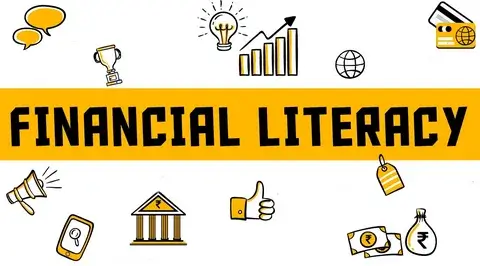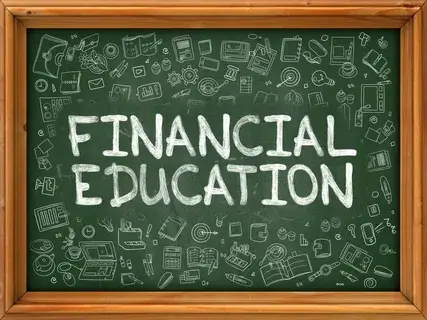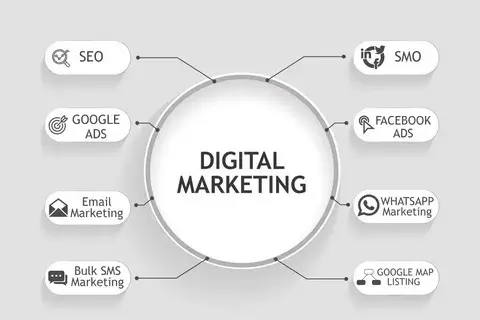“The Crucial Role of Financial Literacy in Education: Empowering the Next Generation” addresses this need.
In today’s complicated and always-changing economy, it’s impossible to say enough about how important it is to teach financial literacy. There is an urgent need to give people the information and skills they need to handle their money problems successfully.
People who know how to handle their money well can make smart choices about budgeting, saving, investing, and paying off debt, which sets them up for a safe financial future. The article goes into great detail about why it’s important to teach money management in schools and how it can completely change the Financial Situation of the next generation.
Come with us as we talk about how teaching financial knowledge in schools prepares the next generation to be financially successful.

The Current State of Financial Literacy
Financial knowledge is still a very important issue all over the world. Even though technology and access to knowledge have improved, studies show that people still don’t fully understand money.
Surveys show that adults don’t know much about money, and many of them have trouble with simple financial jobs. These gaps in knowledge lead to common problems like too much debt, not saving enough, and bad investment choices.
To solve these problems, educators, lawmakers, and financial institutions need to work together. By putting more emphasis on financial education programs and raising knowledge, we can work to improve financial literacy and give people the tools they need to improve their financial well-being.
Why Financial Literacy Should Be Part of Education
To get through the complicated world of today, you need to know how to handle your money. Including financial education in the school program gives students the real-world skills they need to handle their money well, make smart financial choices, and avoid common mistakes.
By teaching people about money from a young age, schooling gives them the tools they need to be financially independent and safe as adults.
Practical Life Skills
Financial literacy teaches kids useful skills like budgeting, handling money, and making smart choices about money that will help them succeed as adults and beyond.
Preventing Debt and Financial Mistakes
Schools can help students avoid getting into debt and making bad financial decisions by teaching them about money. This will set them up for a more stable financial future.
Promoting Financial Independence
Knowing about money gives people the power to manage their own money, which encourages independence, self-reliance, and trust in their ability to do financial management well.
Addressing Economic Differences
Including financial education in schools helps reduce economic gaps by giving all students, independent of background or status in society, the knowledge and skills they need to be financially stable and successful.
Adding financial education to the school system
To give kids important life skills, teaching them about money should be a part of the educational program. Schools prepare students for financial independence and success as adults by teaching them about budgeting, saving, and investing in a variety of courses.
Early Financial Education
Introducing financial ideas to kids at a young age helps them learn how to handle their money responsibly. Which gives them a better understanding of these ideas.
Educational Collaboration
Adding financial awareness to topics like math, economics, and social studies makes sure that students learn everything they need to know. It helps them use what they’ve learned in real life.
Practical Application
Giving kids the chance to learn by doing experiments, projects, and actual-life scenarios. It helps them understand and remember financial literacy skills.
Teacher Training and Resources
Giving teachers access to resources and opportunities for professional development gives them the information and skills they need to teach financial literacy effectively. This makes sure that all schools have consistent and high-quality financial education.

Role of Teachers and Parents in Financial Education
When it comes to helping kids become financially literate, parents and teachers are essential. Teachers integrate money-related themes into classes, demonstrating prudent money management.
Likewise, parents reinforce these lessons through family discussions, setting savings goals, and involving children in financial decisions. This collaborative effort fosters financial literacy and responsible money habits in children.
Educational Guidance
Instructors lead classes in financial literacy, breaking down ideas and offering opportunities for experiential learning to develop the knowledge and skills needed to manage money well in the future.
Behavioral Modeling
By modeling perfect financial behaviors, such as investing, saving, and budgeting. Parents set an example for their children to follow. This helps them form healthy financial habits and decision-making. when they are older.
Open Communication
Teachers and parents work together to provide a secure environment where students can ask questions, address concerns, and have open conversations about money management. This promotes a positive attitude toward money management and continuous learning and exploration of financial concepts.
Collaborative Approach
To maintain consistency in messaging and optimize the impact of financial literacy initiatives both at home and at school. Teachers and parents collaborate to support financial education efforts. They do this by exchanging resources, strategies, and experiences.
Key Financial Concepts to Teach Students
Educating students about key financial concepts is essential for their future financial well-being. Financial literacy includes things like making a budget, Saving Money, investing, and knowing credit.
By teaching these ideas, teachers give students the information and skills they need to make smart financial choices and handle their money wisely for the rest of their lives.
Budgeting Basics
Teaching students how to make and stick to a budget gives them the tools they need to keep track of their spending, set spending priorities, and reach their financial goals. This sets them up for responsible money management and financial independence as adults.
Importance of Saving
Starting to save early on helps youth understand how important money is, build emergency funds, and work toward long-term financial goals. This builds future financial security and resilience.
Introduction to Investing
Students learn about ways to get rich and how important it is to make smart investment choices for long-term financial growth when they are introduced to basic investment ideas like risk and return, diversity, and compound interest.
Understanding Credit
Teaching students about credit, such as credit scores, borrowing, and managing debt, gives them the skills. To use credit wisely, stay out of debt traps, and build a good credit history.
Which is necessary for future financial goals and getting access to financial products.
Tools and Resources for Teaching Financial Literacy
To teach financial literacy well, you need to have access to useful tools and materials. Teachers have various tools to engage students and teach crucial money skills effectively.
These include engaging online platforms, educational games, lesson plans, and workshops.
Online Financial Literacy Platforms
Interactive online platforms have fun games, tools, and simulations that help students learn about money in a fun and interactive way. This encourages active learning and a better knowledge of money issues.
Educational Websites and Apps
Many websites and mobile apps have lesson plans, tutorials, and fun interactive tools that are meant to teach students about planning, saving, investing, and other money topics in an easy to understand way.
Curriculum Resources
Comprehensive curriculum tools, such as lesson plans, worksheets, and teaching guides, give teachers organized materials to teach financial literacy in the classroom. These materials are in line with educational standards and goals for all grade levels and subjects.
Professional Development Workshops
Training and professional development workshops give teachers the knowledge, skills, and strategies. They need to teach financial literacy concepts in a way that works for them. This gives teachers confidence and the ability to give their students a good financial education.
Assessing the Effectiveness of Financial Literacy Programs
The goal of financial literacy classes is to give people the information and skills they need to make smart choices about their money.
But judging how well they work is important to make sure they reach their goals. Evaluating program effectiveness involves assessing participant knowledge retention, changes in money habits, and overall satisfaction.
By gathering feedback and conducting follow-up tests, businesses can gauge program success and make necessary improvements for better outcomes. This iterative process ensures ongoing refinement of financial literacy initiatives.
Conclusion
In conclusion, learning about money is very important for people’s future financial well-being. It is very important to teach about money in schools and give teachers the tools they need to do a good job. Teachers and parents are both very important when it comes to teaching kids about money. Teachers should focus on teaching important money ideas and use various teaching aids and tools to give complete lessons. Evaluating how well financial literacy programs work makes sure that they keep getting better and that everyone who takes part gets better results.











